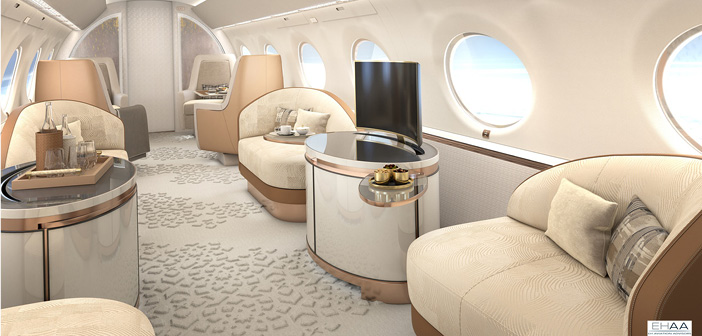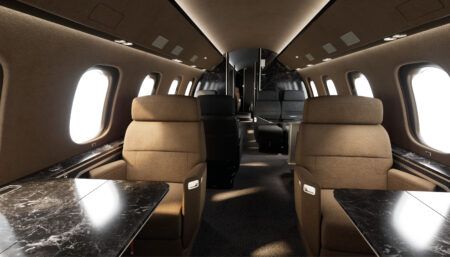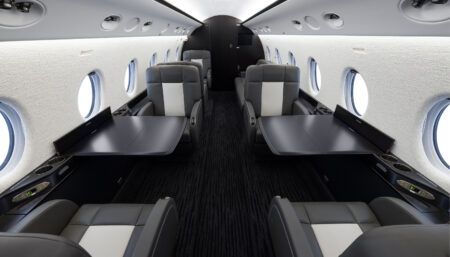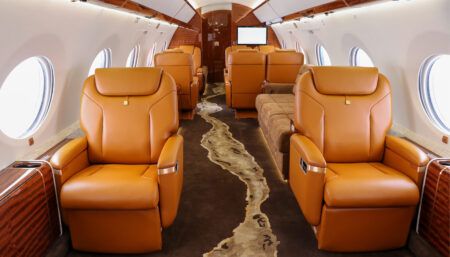In the run-up to EBACE 2022, Elizabeth Harvey, director of design at EH Aviation Advisors, discusses material innovations, IFE technologies and more
What aesthetic trends have you noticed lately?
I’m seeing a re-emphasis on pared-down luxury with a focus on fewer materials, although still beautifully crafted ones, and the continued use of natural and sustainable materials as well as the beginnings of use of materials made from recycled products.
What material innovations have caught your eye?
Sustainable and ecologically friendly materials are of particular interest. Already when I was heading up the design studio at Jet Aviation, several years ago, we were exploring the use of materials such as NewspaperWood, a wood product made from recycled newspapers. More recently, I have been impressed at the approach from Bentley, which is using Vegea, a sustainable material, for its Bentley EXP 100 GT car seats. I believe any innovation that supports a future of sustainable luxury in aviation will be key during 2022 and beyond.
Is the pandemic impacting customer requests?
Clients are keen to ensure that their aircraft is equipped with the most sophisticated air filtration. However they also appreciate the benefits private aviation brings in terms of passenger numbers and traceability, exclusivity and point-to-point service. We’ve seen very high demand lead to a big reduction in secondary market inventory. We see more clients interested in refurbishing pre-owned aircraft, either as a temporary measure while they wait on their new aircraft, or as a fixed solution to enable them to start flying privately sooner.

What IFE technologies are trending? Will the metaverse take off in business aviation?
I feel that the metaverse concept – a network of 3D virtual worlds – found new ground during the pandemic. I saw increased adoption of remote collaboration using a combination of virtual and augmented reality. For example, last year at EH Aviation Advisors, our customer in Asia was able to view a team at an outfitter in Europe, with the designer guiding the whole team through the details of a cabin interior via a VR headset. While this technology has been available for some years, the pandemic drove a much faster adoption, in my opinion, than I had seen previously. In this example however, the customer did still rely heavily on the on-site team to be their physical eyes.
Will the popularity of NFTs impact the industry?
NFTs seem to be gaining popularity as a way to buy and sell digital artwork. If we think of an NFT as being like a physical collector’s item, only digital, it is quite a cool – and easy – way for an aircraft owner to display their artwork in the cabin. Up to now, a physical piece of unique art could not be fix installed on the aircraft and custom artwork needed to go through quite a series of tests, to be certifiable. With NFT art, instead of getting an actual oil painting to hang on the wall, the buyer gets a digital file, so all you need in the cabin is a screen or other means of displaying it.
What other trends are in play?
Li-fi – whereby data is sent through visible light sources – is very interesting. Conceived more than 10 years ago, we are now seeing real adoption. One launch customer has already been announced for ACJ’s multi-technology smart 4K monitor, which offers wi-fi, Bluetooth and li-fi connectivity. I see this technology trend having a great chance to become more widely used in the next few years.
What are your hopes for EBACE 2022?
I’m planning to attend EBACE along with my colleagues from EH Aviation Advisors. I’m very much looking forward to meeting customers, suppliers and the rest of my network.
This interview was first published in the March/April 2022 edition of Business Jet Interiors International.





